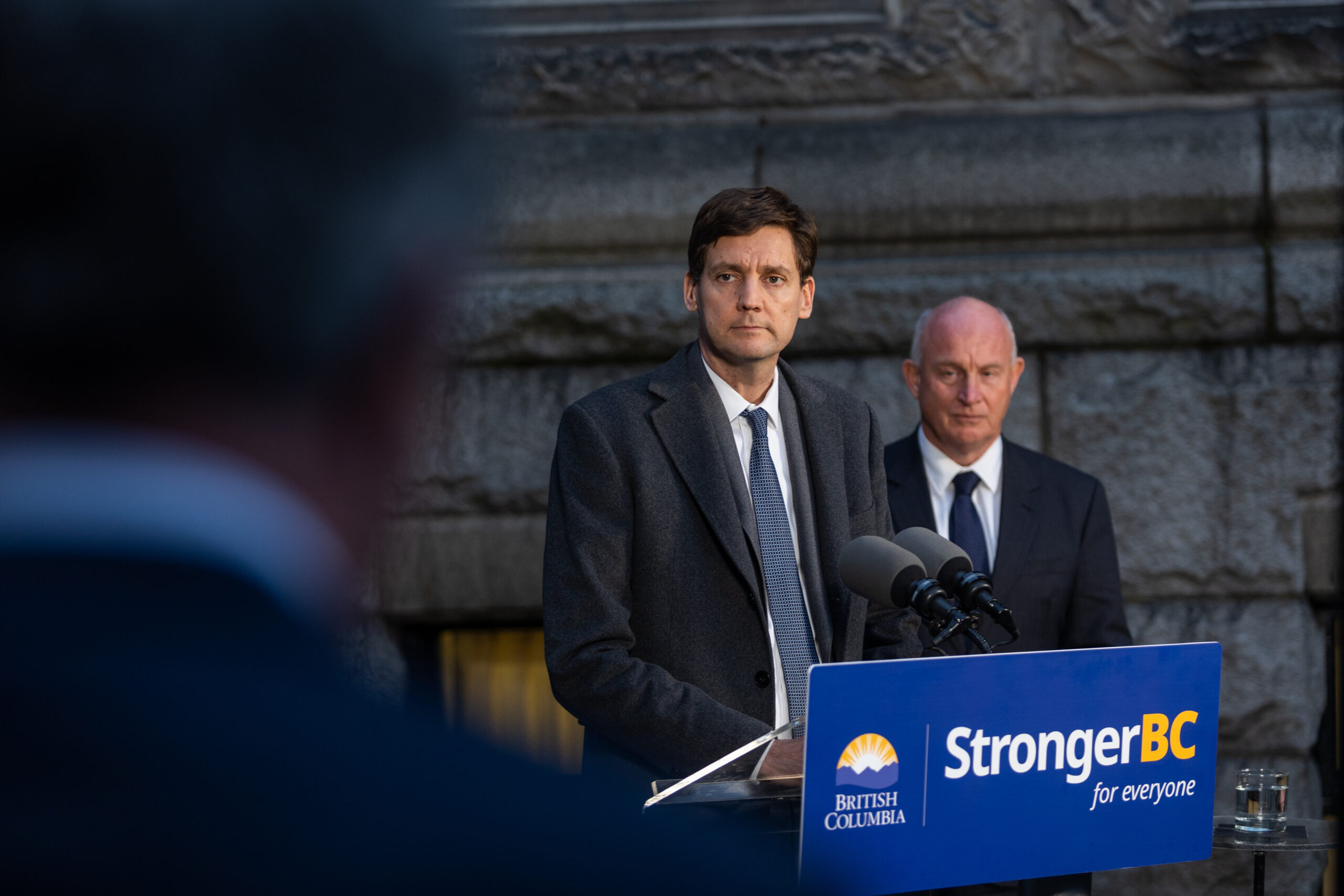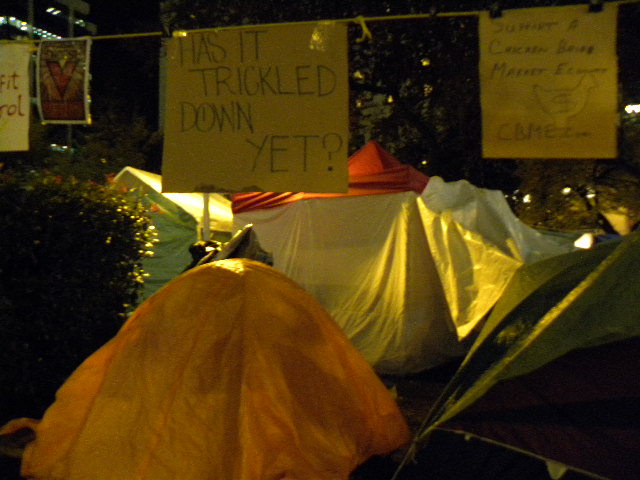“Life is to be lived, not controlled; and humanity is won by continuing to play in the face of certain defeat.”
― Ralph Ellison, Invisible Man
In a serial act of masochism, I’ve tried over the last month to digest the daily froth whipped up by the usual suspects around the issue of Occupy Vancouver. But columnists Jon Ferry (The Province), Mark Hasiuk (Vancouver Courier), Bill Good (CKNW) and the editorial ravings of both Sun and Province have become so predictably reactionary and fear-based that reading them has become something akin to being water-boarded with angry spittle. The consensus amongst them all is a mean-spirited act of wishful thinking: that the Occupy movement disappear, evaporate back into the realm of invisibility where it no longer interrupts the neat and tidy discourse of mainstream journalism. The Globe’s Gary Mason, on the other hand, has at least tried to take a measured approach. His columns wear the see-through veneer of fairness with a token attempt at empathy and an obligatory effort at writerly description.
“He was earnest and almost breathtakingly naive, but also charming in his own way,” Mason writes about an “archetypal occupier” in Tuesday’s column, Cold Comfort as Occupy Vancouver washed away with the rain. This is condescension wearing a mask of compassion, and is typical of the good-cop pundits who think they can ease the consciences of those who want the occupiers to recede from view but without the aid of batons or pepper spray. In fact, “charming and breathtakingly naive” would not be an inappropriate way to describe Mason’s own stance as he surveyed Monday’s dismantling of the VAG settlement. He gives himself and his privileged perspective away in his first sentence, comparing the colour of the “mud pit” left by the occupiers to a “dark French roast.” If this isn’t a joke, it should be. And do the rolled and folded tents bear an uncanny likeness to almond croissants? But even if Mason had been unconsciously pining in the rain for his Starbucks fix, he summoned enough feeling to grant the occupiers a few column inches: “We built a family in a pretty short period of time,” he quotes the earnest/naive occupier. “It wasn’t easy…But it’s a growing process and we’re not done yet. We will get through the winter and look forward to the spring.”
Clang! Okay, time’s up, empathy quota reached. Cue Mason’s turn from pensive observer to the sage who will right (and rewrite) the ship of history. Time to set these naive occupiers and their biscotti-looking dreadlocks straight. Well not really straight. Better to phrase one’s disdain in the form of questions and throw on again that mask of compassion: “The spring. Who knows what will be left of the movement by then,” Mason asks, and I can picture his pseudo-tolerance leaking out from between clenched teeth. “And if it does burst forth again with the arrival of warm weather, what will it look like?” (Well, probably not dark French roast, although a green-tea macchiatto might be a possibility.)
Perhaps as the caffeine withdrawal kicks in, Mason grows increasingly inpatient. The questions turn from sympathetic to cynical. “What has it achieved beyond marshalling small groups of disaffected people in cities around the world who set up tent cities and tried to build a parallel society with its own language and unusual set of rules? I can’t think of much.”
Is it just me, but marshalling disaffected people from all around the world seems like a pretty big accomplishment. And here is where Mason, along with his more militant colleagues, just don’t get it. The Occupy movement, for all its “naive” diversions, was largely about visibility. In Ralph Ellison’s great novel The Invisible Man, the African-American protagonist, feels himself invisible in the shadow of 1940s racism, as well as the in the dark recesses of militant counter-forces. Unseen and unheard as an individual, that was his fate, and that is the fate of the disaffected today. In Ellison’s novel, the unnamed protagonist makes himself feel seen and “real” by festooning and lighting his cramped basement living space with 1,369 lightbulbs.
The Occupy equivalent to the lightbulbs would be the tents. The tents enlightened. They claimed space and provided shelter, but more than that they arrested attention and demanded to be included in the inventory of the visible city. They also made their inhabitants feel validated and seen. In this sense, the Occupy tent city was an inadvertent art installation, and its settlement on the Art Gallery grounds entirely appropriate. The tent city’s fragile, cubist forms mirrored and revealed by its very nature the flimsy nature of late capitalism, the widening cracks in its foundation and its increasing inability to protect the vulnerable from socio-economic storms. And the movement’s also exposed the irony of the name of the civic party who ushered them away: Vision.
After a chat with BC Fed leader Jim Sinclair, who conceded the occupiers’ “hearts were in the right place” Mason concluded his column. “As he [Sinclair] talked, the rain continued to pour. The Occupy movement was getting washed away before his very eyes.” Oh how convenient. Divine intervention washes away the irritants in the eyes of the privileged and provides an opportune wrap for Mr. Mason’s column. Close your eyes, take a sip of dark French roast, and it all seems like it never happened.
Lee Bacchus was feature writer and columnist for the Vancouver Sun and the Province for 20 years.
Photo credit Flickr user raincoaster.
















Neal Hall
November 23, 2011 at 4:21 pm
Lee: Are you sure that it was 1,369 lightbulbs?
Dan
November 26, 2011 at 2:37 pm
Good article!
Lenore
November 26, 2011 at 6:07 pm
What a great piece. Thank you. You have it down: awareness, people who are not hidden any longer keeping the streets “neat & tidy”, the people others don’t want to see, others want to stay hidden from view, others want to blame for the circumstance of need.
I was shocked by the absurdity of the press, the people just not getting it. I kept wondering how can they be so obtuse and lacking in understanding? Isn’t part of their job the supposed to be the ability to be capable of critical thinking? Or are they just already part of the wishful thinking I am a part of the “winners”. Our press is, after all, not for anyone under the middle class.
However, unfortunately for those who hope these “irritants” will now be washed away never to be heard or seen again, this is just the beginning. The tents leaving the Art Gallery is only a physical change.
Occupy has given me hope, a hope I started to lose as the economic changes in attitude and practice started in the 1980′s have accelerated.
Thank you so much for this. (and please delete my first post :))
dan ward
November 28, 2011 at 11:15 am
Thank you!
Neal Rockwell
December 3, 2011 at 9:41 am
This is a good article.
In relation to Gary Mason’s Article:
I really like how he sticks it to a native woman in a motorized wheelchair. Take that wheelchair-bound native woman, people still can’t see what it’s like to be a homeless and landless person in Vancouver, and you don’t represent anyone. Gary Mason, a modern day David is courageous enough to face head-first a contemporary Goliath: a destitute and disabled native woman. I also appreciate how he doesn’t misrepresent her words at all by showing them within a larger context. He makes sure to quote her first statement: “now you can all see what it’s like to be a homeless and landless person in Vancouver” along with the general, and obviously rhetorical Occupy movement slogan “those of us here represent the 99%.” This is important because he can then totally derail everything she’s saying by referencing some uncited “polls” that “showed that the majority of those who originally shared the frustration over greed and inequality that spawned the movement increasingly disagreed with the group’s tactics.” It is a good example of someone employing the Principle of Charity in arguments, which everyone learns when they take first year philosophy courses.
Gary Mason / the good, upstanding, contributing citizens of Vancouver: 1. Gorgon like disabled native woman threatening the foundations of civic order who mistakenly thought that some Vancouverites might have gained deeper empathy and perspective into the lives of the needy: 0.
I also enjoy how crappy patronizing editorials never fail to criticize the “tactics” of any political movement. What are their tactics? Living on the Art Gallery lawn? Who are the people “who originally shared the frustration over greed and inequality that spawned the movement” anyway and what does that mean? What demographic is it that is being polled ostensibly? The demographic of people who had at one time been frustrated by greed and inequality (roughly around Oct. 15th) but now seemingly are not (otherwise why include “originally” instead of just saying “who are frustrated by greed and inequality)? The majority of those who were originally frustrated but now are not are increasingly critical of the movement’s tactic of living on the Art Gallery lawn. Or are increasingly critical of their “tactic” of providing food and shelter for homeless people. In my experience there is no “tactic” mild enough not to draw the ire of stuffy newspaper editorialists.
Barbara Christiansen
December 3, 2011 at 7:14 pm
Well said Lee!